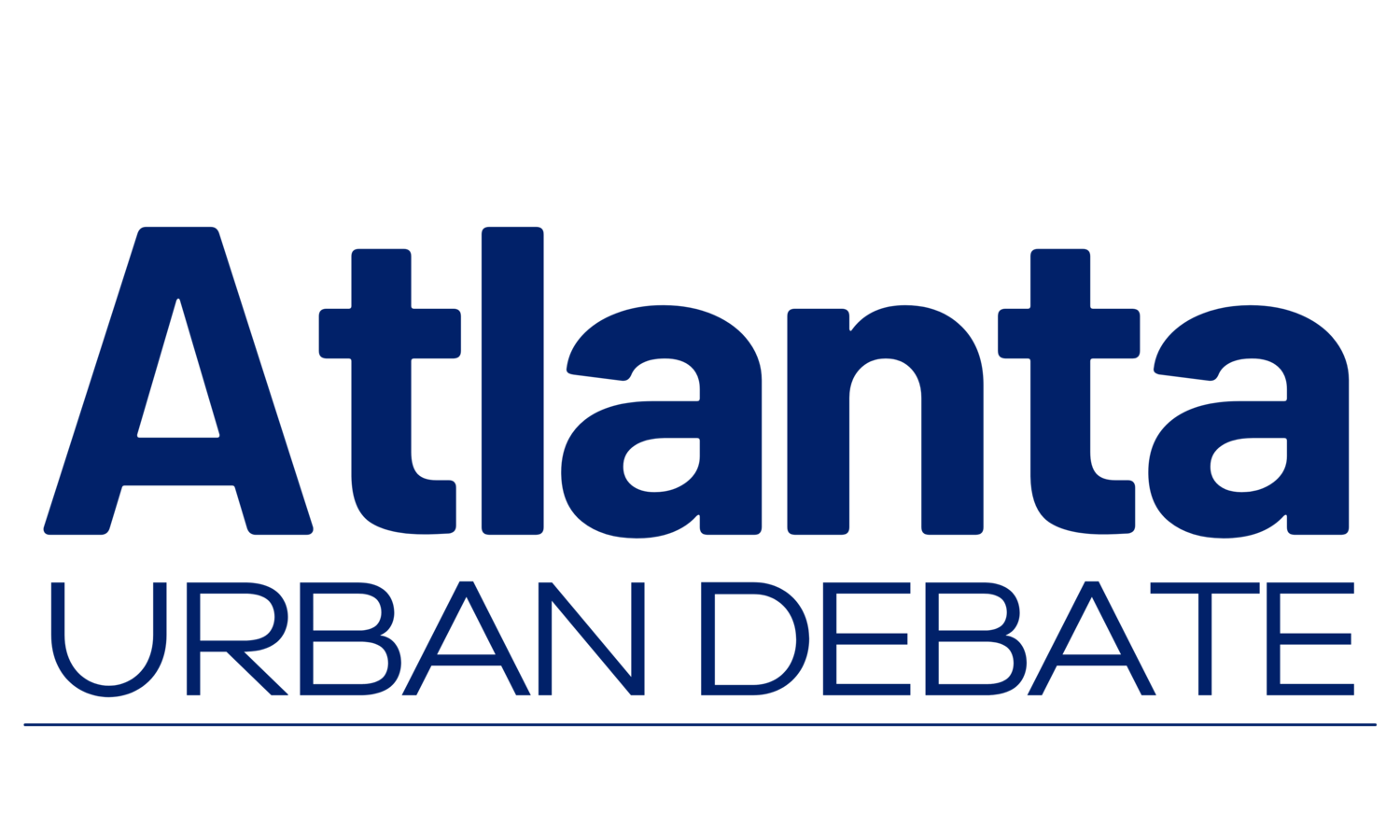The Atlanta Urban Debate League is committed to providing excellent debate education programs, services, and opportunities to diverse students, educators, and members of the community!
Getting Started…
Differences between Public Speaking and Policy Debate
Differences
Audience or Judge?
Structure of Speech
Introduction?
Evidence Incorporation
Contentions
Conclusion
Transitions
Flow
Other
Policy Debate Speech
A judge and an opponent.
Goal is to win = you must create clash.
Your judge is there to weigh your arguments.
Contention structure: plan text, inherency, and advantages.
No formal introduction: inherency and plan text are presented.
Shortened citations: this is possible as files are shared between opponents.
Contention structure is presented, which is mainly jargon.
No formal conclusion is given; the first affirmative constructive speech ends with advantages and impacts.
Transitions are dependent on roadmapping keywords and jargon.
A physical flow paper where judges are tracking arguments exists.
A case is mostly a compilation of expert words across many fields, with little self-made analysis.
Public Speech
A formal audience.
Goal is to create a persuasive argument.
You are there to promote awareness.
Speech structure: introduction, body paragraphs, conclusion.
A formal introduction: the introduction gains the interests of the audience.
Full-length citations: this is to create the credibility of your speech.
No contentions are given; you present pertinent issues.
A formal conclusive device properly wraps up the speech: it presents a summary at the end of the speech.
Explicit transitions are given: “Next”, “Thus”, “My second argument is…”
Your speech must naturally flow without any note-taking.
A speech is fully in your voice – the experts you quote back your claims. This makes your speech unique and stand out.
